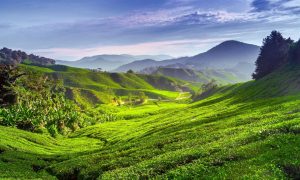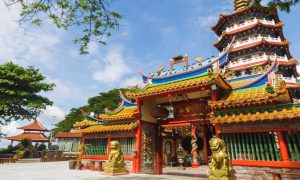There is nothing quite like this king of fruits. The smell may be somewhat distinctive, but it is not the only memorable aspect of the intriguing durian. Read on to learn there is more to this curious edible than you may realise…
Expats do not stay long in Malaysia before they are introduced, often by gleeful local friends, to the mighty durian and all that this extraordinary fruit entails. Some won’t even try it, while some adore it, but everyone should give this curious, yellowy fruit a decent chance, even if it just so you can brag to your buddies back home.
For most, the experience and understanding of durian stops here, at the love or hate stage after the first bite, but delving beneath the prickly surface (metaphorically speaking) can be insightful and interesting. There is more to this slippery smelly fruit than meets the nose.
“THE DURIAN FALLS AND THE SARONG COMES UP”
This Indonesian saying refers to the Javanese belief that durian works as an aphrodisiac, and there were, traditionally, rules about what could and couldn’t be consumed with or after durian.
GO TEETOTAL
Many locals advise against drinking alcohol or coffee after eating durian. This could be wise advice, as a research team at the University of Tsukuba found that the fruit’s high sulphur content causes the body to experience a 70% reduction in its ability to remove toxins after eating.
TASTE THE GOODNESS
The jury is out on whether durian is good for you or not. Durian is praised for being high in vitamins, but the fruit is also high in sugar and fat, so some say go easy on it. Interestingly, in the 1920s Durian Fruit Products Inc. of New York launched a health supplement called Dur-India, selling bottles of durian-based tablets as energy boosters.
INTREPID ITALIANS
Italian explorer Niccolò de’ Conti gave the world the first documented evidence of the durian, and in an Italian scholar’s account of de’Conti’s travels in Southeast Asia in the 15th century, it was announced that the people of Sumatra “have a green fruit which they call durian, as big as a watermelon. Inside there are five things like elongated oranges, and resembling thick butter, with a combination of flavours.” Whether or not de’ Conti enjoyed the “combination” of flavours is not known.
(Hobson-Jobson: The Anglo-Indian Dictionary – Henry Yule, Arthur Coke Burnell)
NUMBERS AND SMELLS
The different numbers of the durian types relate to their different cultivars, and many growers have created new species of durian by taking seeds from superior plants and grafting them onto rootstocks. In 2007 a Thai scientist named Songpol Somsri managed, after crossbreeding more than 90 varieties, to create a variety that didn’t smell. He then created one that developed the smell after three days, allowing for easy transportation to people who enjoy the pungent odour.
MOBILE FRUIT
Durian is native to Brunei, Indonesia, and Malaysia, but Thailand is currently one of the largest producers of durian, with half of the whole country’s produce coming from the state of Chantaburi. Understandably, Chantaburi takes durian seriously, and an annual Durian Festival takes place in May. Durian is now cultivated in many other places including Australia, Madagascar, and Sri Lanka.
———————————————————————————————————
Source: The Expat November 2012
Read more:




















